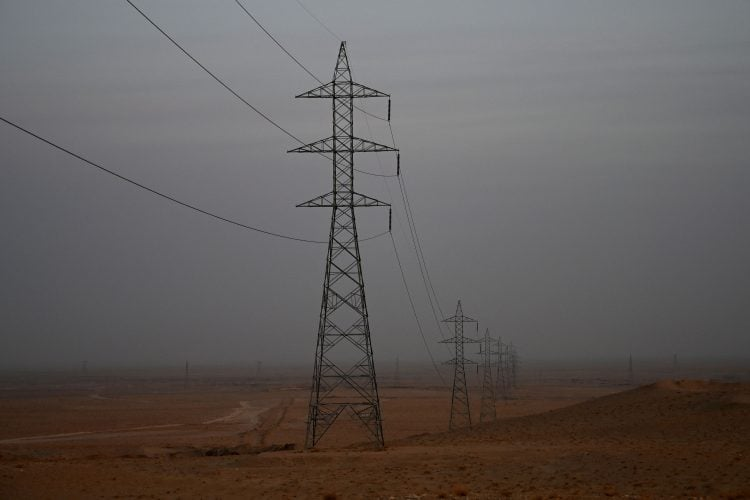RASC News Agency: A powerful midnight earthquake in northern Afghanistan has crippled the country’s fragile electricity network, cutting off imported power from Uzbekistan and Tajikistan and plunging millions across the nation including the capital, Kabul into complete darkness.
According to Da Afghanistan Breshna Sherkat (DABS), the national electricity company, transmission lines supplying imported electricity were severely damaged following the quake, which struck shortly after 1:00 a.m. local time. The tremor’s force toppled key pylons along the Naibabad–Samangan and Khulm–Pul-e-Khumri routes, leaving the national grid severed and exposing the country’s dangerous overreliance on foreign energy.
Electricity supplies to Kabul, Baghlan, Parwan, Panjshir, Kapisa, Logar, Ghazni, Paktia, and Maidan Wardak were abruptly suspended, leaving millions of residents without power for hours. Hospitals, water systems, and essential services have been paralyzed, with many now running on scarce diesel reserves.
Officials from Breshna claim that technical teams were dispatched “immediately” to assess and repair the damage. However, field reports indicate that the response has been slow and disorganized hampered not only by the severity of the destruction but also by the Taliban’s chronic mismanagement and security failures in the affected provinces.
Local sources in Baghlan confirm that several power pylons were destroyed by landslides and falling rocks. Yet, instead of deploying specialized emergency crews, the Taliban reportedly relied on undertrained local units, delaying the restoration process. As one engineer privately told Rask News, “There is no coordination, no equipment, and no leadership. We’re told to fix what we can with nothing.”
In Kunduz, similar damage to the Tajik power line has deepened the crisis. Regions supplied by Tajikistan have also gone dark, highlighting the absence of any domestic contingency plan. Despite Taliban claims of “energy resilience,” Afghanistan remains one of the most power-dependent nations in Asia, importing over 70% of its electricity.
This is the second nationwide blackout in less than two weeks. Earlier in the month, power from Uzbekistan was suspended due to “technical complications,” leaving millions without light for over ten days before partial restoration. Analysts say these recurring failures underscore the regime’s incompetence and lack of foresight.
Before the Taliban’s return to power in August 2021, Afghanistan’s energy sector had begun limited progress toward self-sufficiency through international investment and renewable energy projects. Since then, most of those initiatives have collapsed. Skilled engineers have fled the country, maintenance budgets have been slashed, and corruption has spread through state-run enterprises.
“The Taliban inherited a fragile but functioning system and turned it into a wasteland of inefficiency,” says an independent energy consultant based in Tashkent. “They can’t maintain what they have, let alone build anything new. Afghanistan is literally and figuratively in the dark.”
In Kabul, daily life has ground to a halt. Families are spending nights without light or heating. Hospitals have postponed surgeries. Small businesses, already crippled by inflation and international isolation, now face total shutdowns. Many Afghanistanis describe the blackout as symbolic of a regime that has failed to bring either stability or progress.
The Taliban, meanwhile, continue to issue hollow reassurances through state media, claiming that repairs are “underway.” No specific timeframe for power restoration has been announced. The group has also remained silent on reports that damaged infrastructure had been left vulnerable due to poor maintenance and the diversion of technical funds to military operations.
Afghanistan’s power crisis is more than a logistical failure it is a reflection of deep structural decay. Despite abundant solar and hydroelectric potential, no significant domestic projects have been launched under Taliban rule. The regime’s isolation from global financial systems has deterred foreign investment, while its restrictive governance has driven out much of the country’s technical expertise.
Energy analysts warn that without reform and transparency, Afghanistan will remain hostage to external suppliers countries that can, at any moment, pull the plug. “The Taliban talk about independence, but they can’t even generate light for their capital,” one regional analyst noted.
For millions of Afghanistani citizens, the blackout has become a metaphor for their daily reality a life dimmed by repression, isolation, and neglect. The regime that promised “self-reliance under Islamic governance” has instead delivered a nation dependent on others for its most basic needs.
In the end, the lights may eventually come back on but under Taliban rule, Afghanistan’s future remains uncertain, flickering on the edge of darkness.






